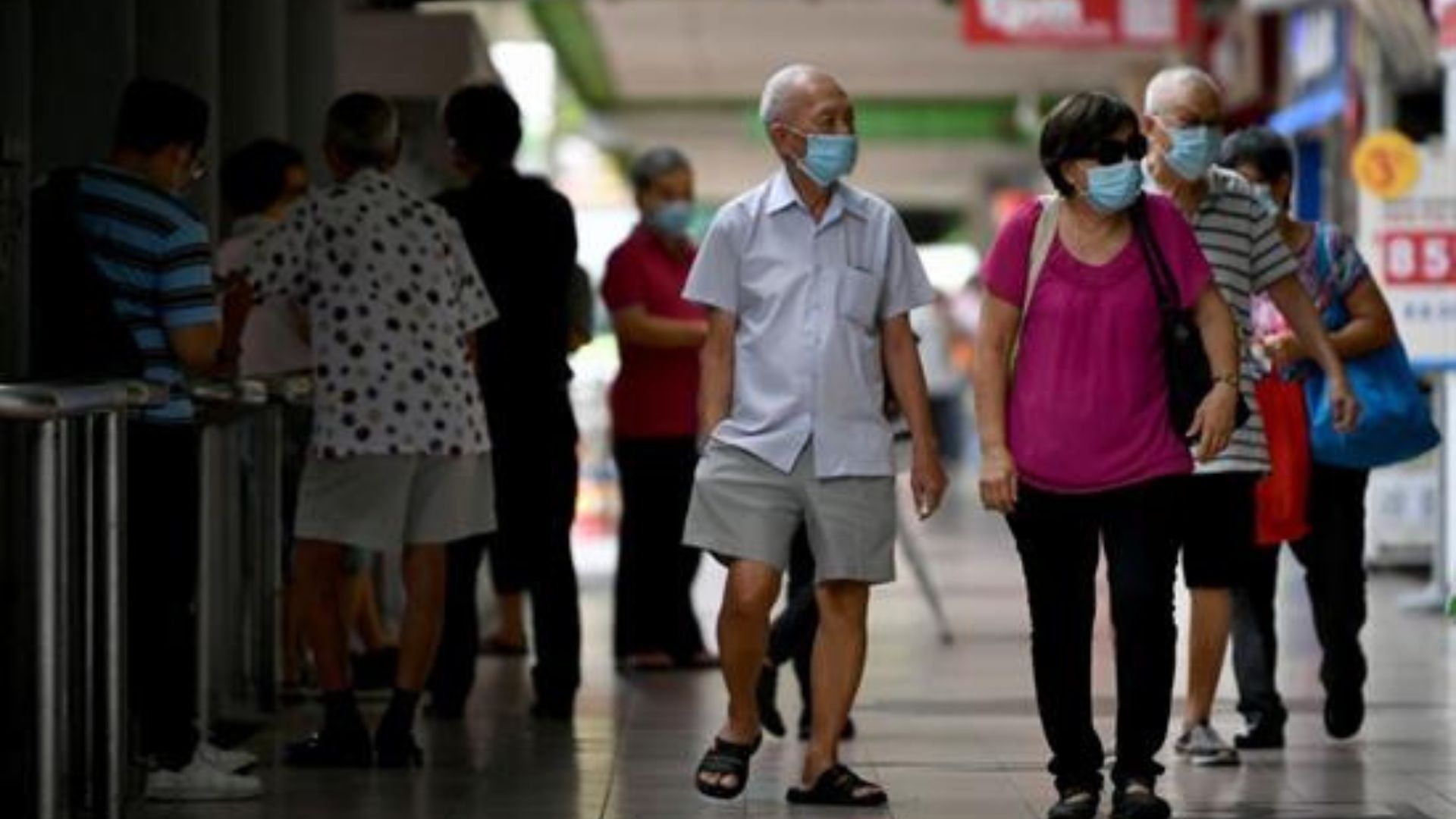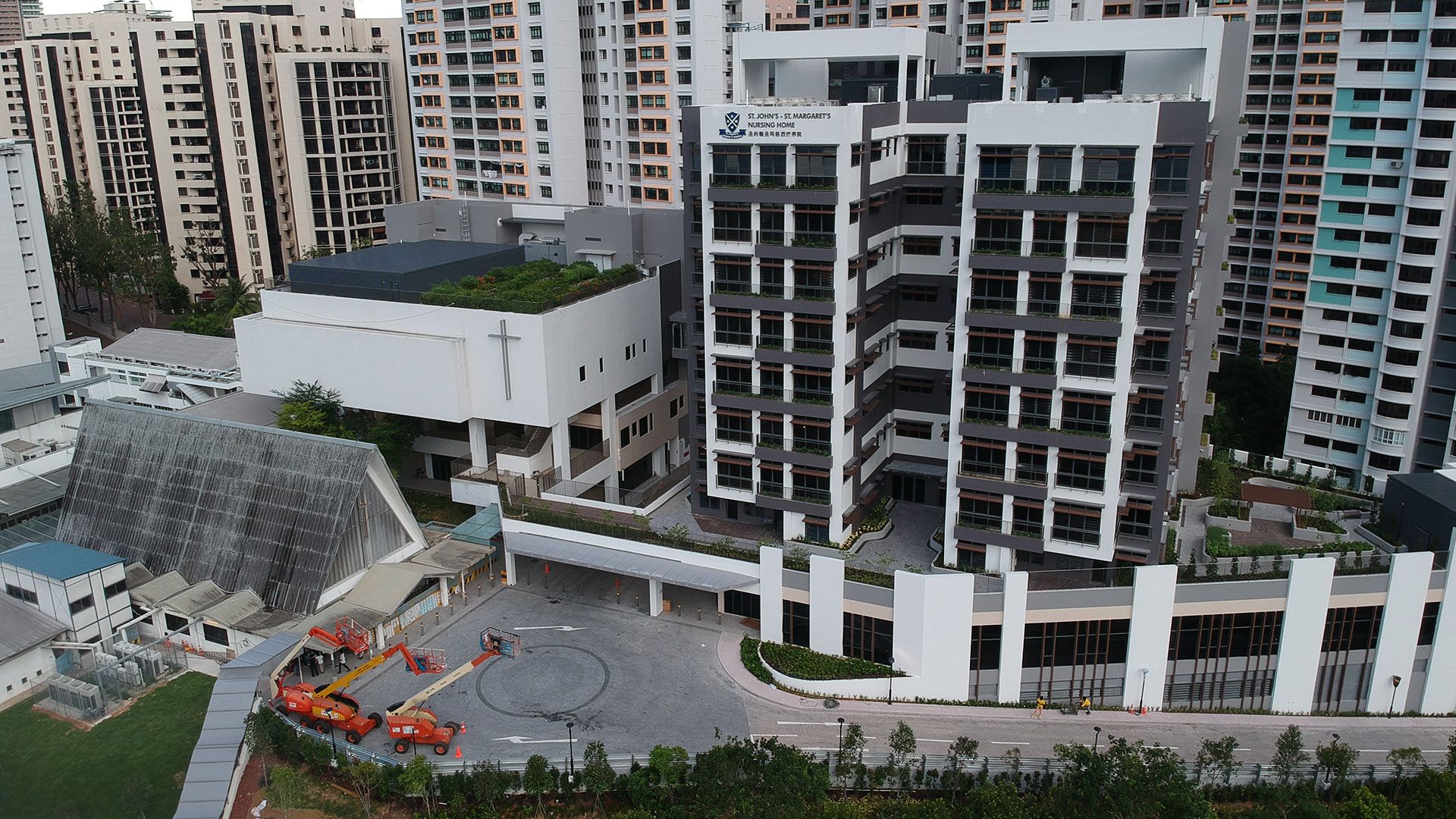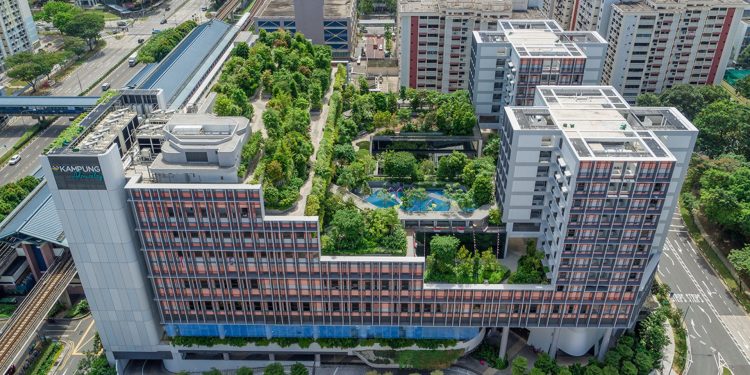Elderly Singaporeans are ageing in place as they live longer now, compared to the situation a decade ago.
In fact, the island republic is one of many Asian countries facing a “silver tsunami”, or the rapid increase in the number of elderly citizens.
Referring to a Healthcare Asia report in 2019, then Senior Minister of State for Health Amy Khor said, “By 2030, 1 in 4 Singaporeans will be 65 years old or older, with the number of resident seniors expected to have doubled to more than 900,000.’’ She was speaking at the Caregiver Symposium in 2018.
Data from Tohoku University’s Smart Ageing International Research Center (SAIRC) also revealed that there would be 34 super-aged societies in the world by 2030, predominantly in Europe or Asia.

These are countries where more than 20 per cent of the population will be over the age of 65. Japan is already one of them, with Hong Kong, Singapore, South Korea and Taiwan set to follow by 2025. China and Thailand are not too far behind.
In the past decades, a common way to tackle housing and healthcare needs of the elderly population was through nursing homes and homes for the aged.
Social support plays a crucial role
But Professor Phua Kai Hong of the Lee Kuan Yew (LKY) School of Public Policy believes that a crucial problem faced by an ageing population is the lack of social support.
In a 2018 report by EdgeProp Singapore, he said, “When families get smaller and adult children live further away from their parents, it’s harder for them to take care of their elderly folks.”.
Prof Phua added that that is why designing facilities that will promote social integration is vital in a retirement village. “Facilities such as void decks and support services such as medical clinics, childcare and eldercare would promote interaction between those of different generations,’’ he said.
Between 1982 and 1984, a Committee on the Problems of the Aged, chaired by then Minister for Health Howe Yoon Chong, was formed to study the implications of an ageing population and recommend solutions to its challenges.
The Committee foresaw that the rapidly ageing population would require a national policy aimed at keeping every senior physically and mentally fit to continue to lead a normal, useful and active life.
Addressing the contributions of seniors in the workforce, the Committee called for the customary retirement age to be raised from 55 to 60, and later to 65, and to raise the age for the withdrawal of retirement funds in stages. It also listed alternative employment options such as part-time work, flexitime and work at home as a means of creating more job opportunities for seniors.
Acknowledging that the best guarantee of care for seniors comes from the family, the 1982–1984 committee report also placed special emphasis on the need to foster filial piety among the young.
Ageing in place: Not a new concept
Findings such as those made by Prof Phua have prompted the formation of a movement called “ageing in place”. According to a Civil Service College (CSC) report in 2019, ageing-in-place and community-based care are Singapore’s main tenets of aged care. They are founded on the social philosophy of the family and the community as the first and second lines of support, respectively.
The best scenario of this would be seniors living in their homes and receiving Meals on Wheels or living in a retirement community so that transportation to healthcare facilities is not a major concern. But ageing in place is best suited for those who have good health, a strong support system and minimally maintained, fully paid off homes.
The CSC report added that public education efforts have attempted to reshape values, attitudes and perceptions towards ageing and seniors. The intent is to foster a society where older persons are valued as contributing members and remain actively engaged within their families, communities and society.

One initiative is the “Kampong for All Ages” which focuses on building cohesive intergenerational communities that support older persons to age-in-place. It is where older persons are regarded with love and respect, and given the support to stay connected to the communities they live in.
In 1999, the Ministry of Community, Youth and Sports (MCYS) introduced year-round public education programmes on active ageing, highlighting the need to plan early for old age and maintain an active, engaged senior lifestyle. These messages are complemented by other programmes from various agencies and voluntary organisations.
The importance of seniors maintaining active lifestyles continues to be emphasised, with efforts to encourage healthy living, active lifestyles, social networks, lifelong learning and strong family ties. In 2006, the Government committed $20 million to the Golden Opportunities! Fund, which provides seed funding for programmes and activities promoting different aspects of active ageing.
Social integration of the young and old
One key thrust of Singapore’s ageing policies has been the social integration of seniors and intergenerational cohesion. Strong families continue to be seen as the first line of support for seniors. While children have the responsibility to take care of their elderly parents, seniors can also contribute, for example as active grandparents.
With this aim in mind, the government has planned to build facilities that integrate such social integration for seniors and intergenerational cohesion. Kampung Admiralty has come up as a shining example of this effort.
It is Singapore’s first public retirement village, where childcare and senior centres are co-located. It is the first of 10 such HDB housing precincts that the government intends to roll out over the next decade. It is part of a $3 billion plan unveiled in 2015 to prepare the nation for the rise in an ageing population, covering more than 70 initiatives, including housing, employment, health and wellness.
Retired urban planner Devon Koo, who is in his 60s, says that the success of Kampung Admiralty has pointed to plans for further HDB developments to serve as retirement communities, but the Covid-19 pandemic put many of those plans on hold.
‘’However, there is no doubt that the retirement village concept works well for the needs of Singapore’s senior community by putting many important features such as eating, recreation and lifestyle amenities within easy reach in the same block. Medical and enrichment facilities are also close by,’’ he says.
Kampung Admiralty comprises 104 flats housed in two residential blocks of 11 storeys each. The units are a mix of studio apartments and two-bedroom flexi flats, all equipped with design features that include support bars in washrooms and along the walls leading to the units’ front doors, induction cookers in place of gas stoves, and retractable clothes drying racks.
Within the activities hub on the sixth floor of Kampung Admiralty are a childcare centre, rehabilitation and elderly activities hub, spaces for elderly people to play board games, while other spaces are eating spaces for them to interact with family, friends and loved ones.
There is also a two-level medical centre and a pharmacy, a rehabilitation, activities hub and a day-care centre, and a 900-seat NTUC Foodfare hawker centre, where half of the dishes conform to health standards set by the Health Promotion Board (HPB).
All the units in Kampung Admiralty were taken up in HDB’s July 2014 build-to-order exercise. Of these, 60 per cent were purchased by existing residents in Woodlands and neighbouring towns, HDB said.

Meanwhile, St John’s-St Margaret’s Village (SJSM Village), which was opened on 14 September, comprises St John’s-St Margaret’s Nursing Home, St Andrew’s Senior Care (Dover), Little Seeds Preschool (St John’s-St Margaret’s), and St John’s-St Margaret’s Church. It is the first purpose-built facility that integrates intergenerational facilities in one site.
“We needed to intensify the use of the land, and we were inspired by a passage in the Bible that captures a picture of the elderly and young children being and playing together. That’s how we came up with the idea for the village,’’ Mr Larry Choi, chairman of Project Spring-Winter, the church’s community service project, told The Straits Times.
The senior care centre and nursing home will help seniors in the community age in place, as well as play an active role in promoting active ageing.
Apart from private ventures, the government has also introduced Senior Activity Centres since the 1990s, targeting elderly folks living in HDB flats. It planned for 58 SACs in various HDB estates to serve 48,000 elderly folks by 2020.
Mr Koo says that integrated complexes such as SJSM Village point to new and encouraging trends for ageing in place in Singapore by bringing back communal-style care facilities and methodologies for dealing with the ‘’senior tsunami’’.
‘’Past housing and nursing home design tended to be more functional, focusing on amenities, accommodation and food provision. That is not wrong, but along the way, the ‘soul’ of senior life was not nurtured and many seniors who lived in such facilities were unable to age gracefully and actively. The return to the ‘village’ concept reinforces the involvement of the whole community and generations — adults, children and even infants — in the meaningful life of the seniors in their twilight years,’’ he says.
Mr Koo says that nursing homes have also begun to be more ‘’senior-sensitive’’ by introducing new design features to accommodate the ageing population such as integrated activity facilities that are close to the community, open-air spaces with flower gardens and grass patches that are close to kindergartens and playgrounds, to enable inter-generational interaction and bonding.
There is undeniably more room for the aged care industry to grow. In an ageing population, situations change as a spouse may pass on, and living needs will change as health deteriorates.
In his report, Prof Phua wrote, “The whole concept centres around different strokes for different folks. In the end, it is about figuring out the best way to live out the remaining years of our lives.”
RELATED: Ageing in place: Not everyone’s cup of tea, but a necessary pill to swallow
Join the conversations on TheHomeGround Asia’s Facebook and Instagram, and get the latest updates via Telegram.














